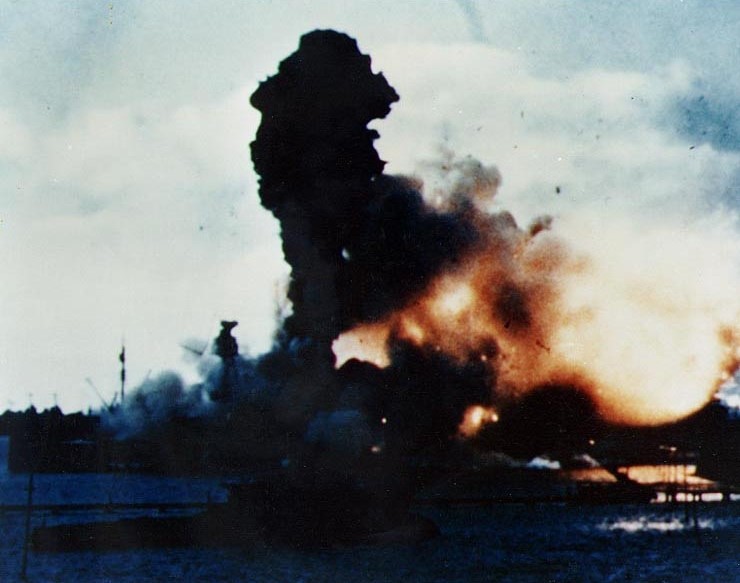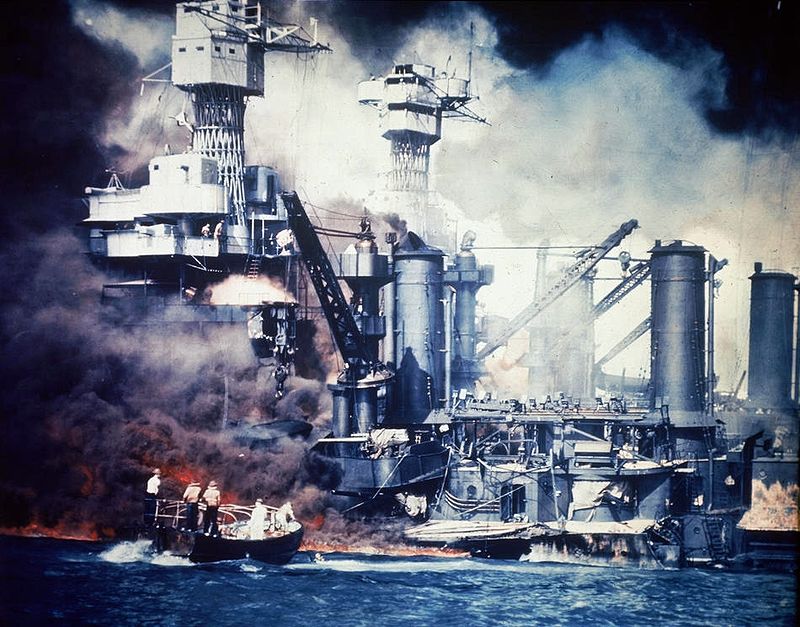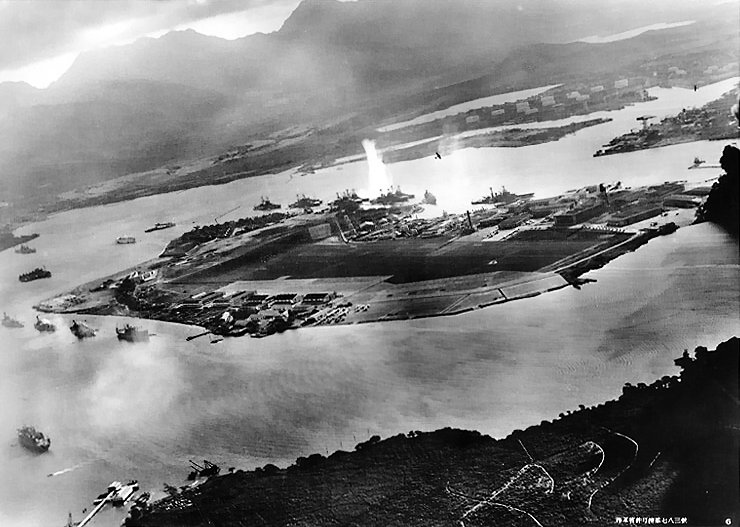Maritime History: 73rd Anniversary of Pearl Harbor Attack
Pearl Harbor Survivor Recounts Life-changing Experience During CNIC Visit
Aftermath: USS West Virginia (severely damaged), USS Tennessee (damaged), and the USS Arizona (sunk).
The 19-year-old airman jumped from his bunk when he heard a thunderous explosion outside his third floor barracks window, Sunday morning, Dec. 7, 1941. When he looked out the window, he saw a plane with a big red ball flying low to the ground strafing Hickam airfield.
Retired Air Force Chief Warrant Officer Jay C. Groff Jr., a 92-year-old Pearl Harbor survivor, recounted his story about his attack on Pearl Harbor to the staff at Commander, Navy Installations Command (CNIC) headquarters in Washington, D.C., during a remembrance ceremony Dec. 3.
"That was the first time I was scared," said Groff. "I could see the bombs coming down through the ceiling."  Groff explained that the thick reinforced concrete walls in the barracks sheltered him from the blast and probably saved his life.
Groff explained that the thick reinforced concrete walls in the barracks sheltered him from the blast and probably saved his life.
Photo (right): Battleship USS Arizona explodes.
Through the explosions and gunfire, Groff hastily made his way to an armament building to help a technical sergeant set up machine guns in a baseball field while Japanese Zeroes strafed them.
"We set up probably 10 guns between home plate and third base," Groff recalled. "I was in my skivvies; I didn't bother to put clothes on and until this day I couldn't tell you if I was wearing shoes."
Groff left the baseball field to join with fellow airmen at his boathouse duty station and manned a machine gun on its roof. They were only there a short while when an unarmed American B-17 bomber, being shot at by a Japanese Zero, tried to land on the runway just beyond the boathouse. Groff was so close he could see someone leaning out of the B-17 and the puffs of smoke coming from the Zeroes guns as the bomber crash-landed.
"The Zeroes' rounds hit a flare box in the B-17 and by the time it finished rolling the plane had burned in half," said Groff.
Photo: Battleship USS West Virginia took two aerial bombs, both duds, and seven torpedo hits, one of which may have come from a midget submarine.

Groff made it through the events of that terrible day but realized he had just witnessed what could have been the most important day of the 20th century. The world had changed for the United States and for him.
"That morning I realized that there was somebody out there trying to kill me," said Groff. "That changed my outlook on life."
Groff enlisted in the Army Air Corps after graduating from high school in May 1940. After arriving at his first duty station at Hickam Field in Oahu, Hawaii, Groff was assigned to the crash boat section on the base. Prior to the use of helicopters, the Army Air Corps used fast watercraft similar to Navy patrol torpedo boats to pick up pilots who crash-landed in the water.
The ceremony concluded with Groff reading a poem entitled 'To You Our Fallen' written by Sergeant W. Joe Brimm, Dec. 7, 1941, and a heartfelt thank you from Capt. Douglas F. Cochrane, chief of staff, CNIC. "Thank you for your service and thank you for an example today of a life extraordinarily well lived,"
Photograph of Battleship Row taken from a Japanese plane at the beginning of the attack. The explosion in the center is a torpedo strike on the USS West Virginia. Two attacking Japanese planes can be seen: one over the USS Neosho and one over the Naval Yard.

The attack on Pearl Harbor was a surprise military strike conducted by the Imperial Japanese Navy against the United States naval base at Pearl Harbor, Hawaii, on the morning of December 7, 1941 (December 8 in Japan). The attack led to the United States' entry into World War II. For more information on the Pearl Harbor Attack from Naval History and Heritage Command, visit http://www.history.navy.mil/faqs/faq66-1.htm.
